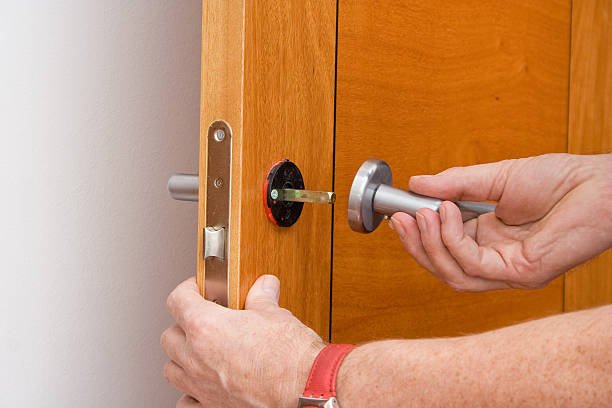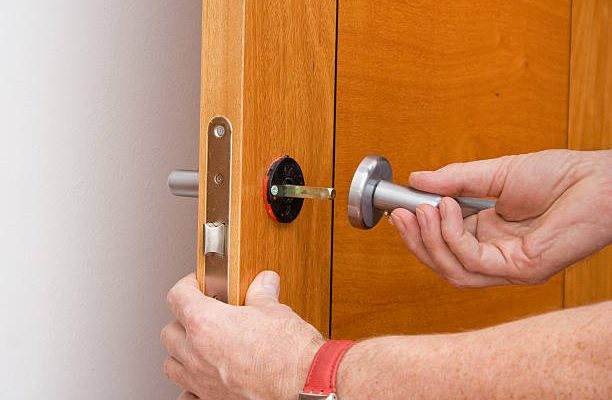
Honestly, deadbolt play isn’t something you notice until you do. Maybe you moved into a new place and the first time you lock up at night, the bolt sort of…wobbles. Or one day the door feels harder to lock, and suddenly you realize the hardware just isn’t sitting right. Fixing this is totally doable—even if you’ve never held a screwdriver in your life. Let’s break down why it happens, how to diagnose it, and all the simple steps you can take to repair a deadbolt that’s got a mind of its own.
What Is Excessive Play in a Deadbolt?
You might be wondering what “excessive play” actually means. In plain terms, it’s when the deadbolt feels loose, wobbly, or moves around more than it should when you lock or unlock the door. A good deadbolt should sit snug—like a puzzle piece clicking into place. But when there’s excessive play, you might feel the bolt moving inside the lock housing or notice the whole lock assembly shifting when you turn the key.
Here’s the thing: a little movement can be normal. Over time, doors expand, screws loosen, and hardware wears out. But if your deadbolt is rattling, feels like it’s sinking into the door, or you can wiggle it side to side, *that’s* excessive play. Not only does it feel weird, it can also make your home easier to break into. So, sorting this out isn’t just about peace and quiet—it’s about real security.
Not every deadbolt or brand is the same, but excessive play usually comes down to similar problems. Whether you’ve got a simple key-operated model or a fancy electronic lock with a code or remote, the basic mechanics are similar. Parts can work loose. Screws can back out over time. And sometimes, the strike plate (that metal part on the door frame) just isn’t lined up right.
Why Deadbolts Develop Excessive Play
Let me explain—deadbolts aren’t exactly complicated, but a handful of things can go wrong. One of the most common causes is everyday use. Think about it: you open and close your door, lock and unlock it, maybe even slam it a few times a day. Over months or years, that gentle (or not-so-gentle) force starts to loosen screws or wiggle hardware out of position.
Another big culprit? Changes in the door or frame. Wood swells and shrinks with humidity. If your door gets hit with a lot of sun or moisture, it might twist just enough to throw the deadbolt off. Sometimes, the door frame itself shifts, especially in older houses or apartment buildings.
Here’s where it gets interesting: not all play comes from the door. Sometimes, it’s the internal parts of the deadbolt itself. If the connecting rod (the part that links the outside and inside halves) wears down or the internal springs get tired, the lock starts to feel loose even if the screws are tight.
And don’t forget improper installation. Maybe someone didn’t snug up the screws the first time, or the strike plate isn’t sitting flush. If the lock wasn’t paired with the right size latch, or if the screws holding the plate to the frame are tiny, you’ll end up with a wobbly fit no matter what.
How to Diagnose the Source of Deadbolt Play
Before you pull out the tool kit, you’ll want to figure out *where* the play is coming from. Diagnosing the issue saves time—and keeps you from chasing the wrong fix.
Start by locking and unlocking your door with the handle and key. Notice if the movement comes from the bolt itself, the lock cylinder, or the entire unit shifting on the door. If you can wiggle the outside part of the lock (where you put the key), there’s likely a problem with the way the lock is mounted to the door.
Next, open the door and throw the bolt with the door open. Does it still feel loose? If so, the problem is with the lock. If it’s tight, but feels loose only when the door’s closed, the strike plate or frame alignment could be the issue.
You might also want to check the screws. Tighten each one gently with a screwdriver. If you find a loose screw, that’s often the cause of excessive play. For more stubborn cases, you could find wear inside the lock itself—metal parts that no longer fit together well or a latch that’s lost its springiness.
It’s kind of like diagnosing a weird noise in your car—you want to pinpoint the rattle before you start popping off panels or ordering new parts.
Check for stripped screw holes, misaligned strike plates, or visible gaps between the lock and the door. Each clue will help you zero in on what needs repair.
Tools and Materials You’ll Need
You don’t need a pro-grade toolbox, but you will need some basics to fix a deadbolt with excessive play. Here’s a quick list:
- Phillips screwdriver (most deadbolts use these screws)
- Flathead screwdriver (sometimes needed to pry cover plates or gently adjust hardware)
- Wood glue or toothpicks (for repairing stripped holes)
- Replacement screws (if originals are stripped or too short)
- Drill (optional, for enlarging or reinforcing holes)
- Measuring tape (to check strike plate and bolt alignment)
- Lubricant (like graphite or silicone spray, for sticky bolts)
For electronic deadbolts—like a Schlage or Kwikset with a code pad—you might also need:
- Fresh batteries (if the lock seems “soft” or slow)
- Reset instructions (just in case you need to recalibrate or sync after opening it up)
Make sure you’re working in good light. If you drop a screw, you’ll want to find it before it rolls under the fridge or into a vent!
Step-by-Step: Repairing a Loose Deadbolt
Now, let’s get your deadbolt back to feeling strong and secure. Here’s a beginner-friendly process:
- Remove the deadbolt: Unscrew the two mounting screws on the inside plate (usually facing the room). Gently pull both sides of the lock off the door.
- Inspect the screws and holes: Look for stripped screw holes or worn screws. If screws won’t tighten securely, you’ll need to fix the holes with wood glue or fill them with toothpicks before reinserting screws.
- Check the connecting rod and bolt: Make sure these internal parts aren’t bent or excessively worn. If they wiggle inside the lock body, replacement might be needed.
- Reinstall and tighten everything: Put the lock back together, ensuring the inside and outside pieces are aligned. Tighten screws firmly, but avoid overtightening and stripping the holes again.
- Test the action: Before closing the door, lock and unlock several times. The bolt should move smoothly, with very little play or wobble.
- Check the strike plate: With the door closed, see if the bolt fits snugly into the strike on the frame. If there’s a gap, adjust the strike plate or replace the screws with longer ones to pull it tighter to the frame.
If you’re working with a smart or code deadbolt and had to remove batteries or disconnect wires, make sure to reset or resync it according to your brand’s instructions. Sometimes, opening the lock case means you’ll need to run a pairing or troubleshooting routine when reinstalling.
Troubleshooting Stubborn Deadbolt Issues
Sometimes, you do everything right—and the deadbolt still isn’t tight. Here’s what to check next:
- Stripped screw holes: If holes are too loose, pack them with wood glue and broken toothpicks, let dry, then reinsert screws. This gives them fresh grip and stops wobble.
- Misaligned strike plate: If the bolt doesn’t sit flush in the strike, adjust its position on the frame with a screwdriver or, if necessary, drill new pilot holes for a better fit.
- Worn parts: If the internal bolt, connecting rod, or springs are clearly damaged, consider replacing the deadbolt. Most brands sell universal deadbolt kits that fit standard holes.
- Electronic lock issues: If an electronic deadbolt feels loose but all screws are tight, open it and check for internal wear. Also replace the battery, as weak power can cause the bolt to move slowly and create perceived play.
If the deadbolt still wiggles after all this, the door itself might be warped or oversized for the lock. In this case, shimming the lock or replacing the entire deadbolt with a “jumbo” or reinforced model might be the best move.
Comparing Universal Deadbolts vs. Brand-Specific Models
If you’re thinking about replacing your old lock entirely, you’ll run into two types: universal deadbolts and brand-specific models (like Schlage or Kwikset). Here’s what to know:
- Universal deadbolts fit most standard pre-drilled doors. They’re great if you need a quick fix, easy to pair with your existing setup, and often come at a lower price point.
- Brand-specific deadbolts sometimes offer more features: better code options, remotes, unique reset or sync functions, and higher security ratings.
Here’s the thing—if your door was drilled for a certain brand, sticking with the original might mean a faster install. But if your old lock had excessive play because it never fit right, a universal model can give a fresh start. Just make sure to check the backset and bore size so everything lines up and you don’t end up with more play than you started with.
Upgrading Security After Repairing a Deadbolt
Even after you snug up your deadbolt, there are a few extra steps you can take to boost your door’s security and keep excessive play from coming back.
- Replace short screws in the strike plate and lock with 3-inch screws that anchor into the wall stud. This makes it way harder to force the door open.
- Consider a reinforced strike plate or security plate. These spread out force from a kick or pry attempt—and keep the lock seated firm.
- If you use a smart or remote deadbolt, check the battery regularly. Low battery power can cause sluggish operation and “soft” locking, which *feels* like play.
- Lubricate moving parts every year to keep locking smooth and prevent wear that leads to loose action.
Security isn’t just about how strong your deadbolt is—it’s about how solidly the whole system fits together, from door to frame to lock.
Simple upgrades like these can make a basic deadbolt (even a universal model) feel and operate as secure as some high-end systems.
When to Call a Locksmith
Not every deadbolt problem needs a pro, but sometimes you run into an issue that’s just outside a beginner’s comfort zone. Here’s when you might want to bring in a locksmith:
- The lock mechanism is damaged beyond repair or parts are missing.
- The door or frame is warped so badly that even new hardware won’t fit right.
- You need to rekey the lock or pair new remotes/codes and can’t find clear instructions.
- The deadbolt just won’t tighten up, no matter what you try.
A locksmith can quickly diagnose problems, recommend the right universal or brand-specific replacement, and make sure everything is synced, paired, and secure. Sometimes spending a little for professional troubleshooting saves a lot of future headaches—and keeps your home safe.
Wrapping Up Your Deadbolt Repair
Repairing a deadbolt with excessive play might seem a little intimidating at first, but the truth is, most issues come down to loose screws, worn parts, or simple misalignment. With a screwdriver and a bit of patience, you can tighten things up and make your lock feel solid again. Whether you’re working with a universal deadbolt, a coded Schlage, or a trusty old Kwikset, the same basic rules apply: diagnose the source of the play, tighten up the hardware, and don’t be afraid to replace parts if they’re past their prime.
Keeping your deadbolt snug isn’t just about locking the door. It’s about that satisfying feeling of security—knowing your home is as safe as it should be. Take a little time to do it right, and your deadbolt will work like new for years to come.
